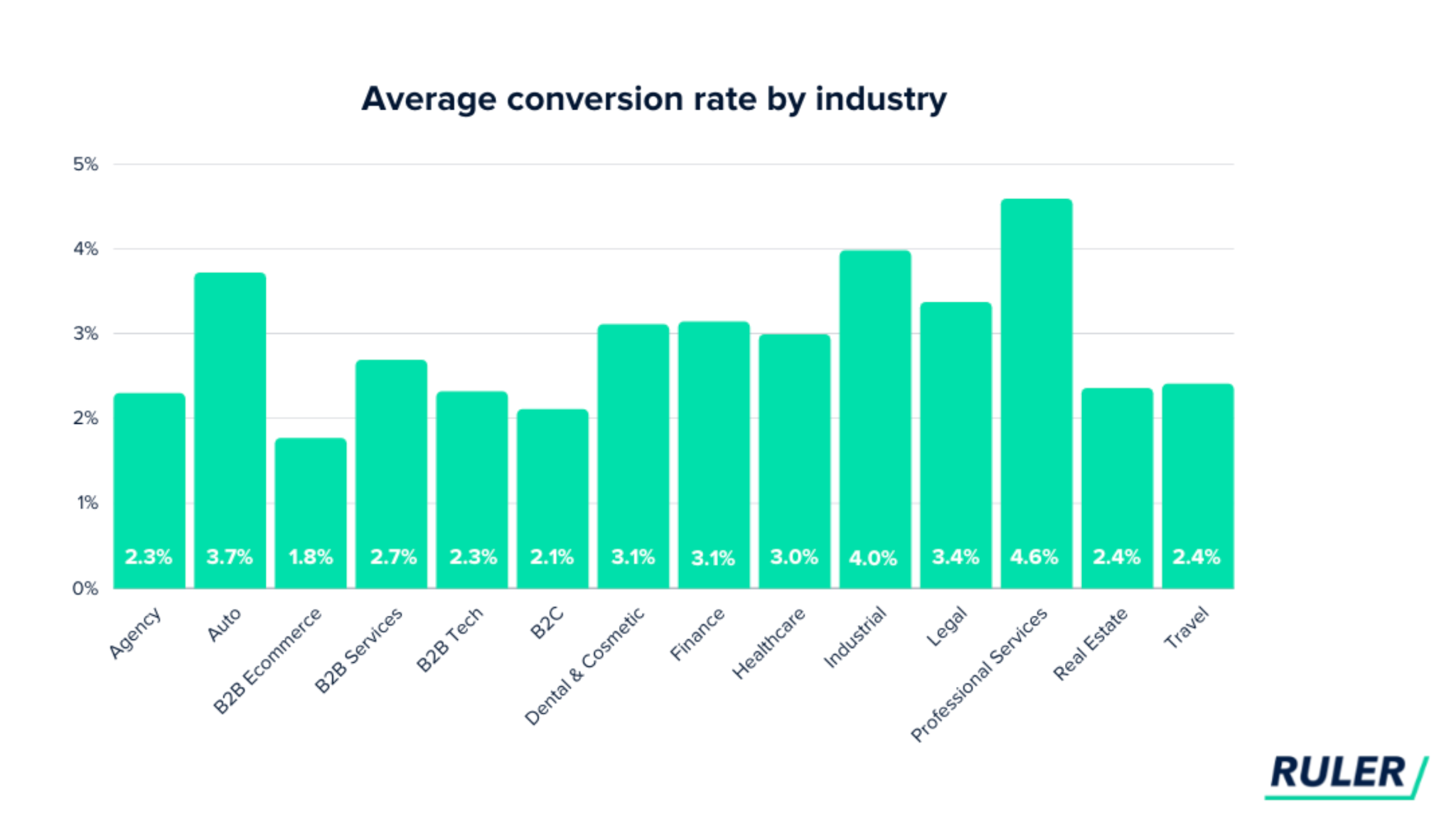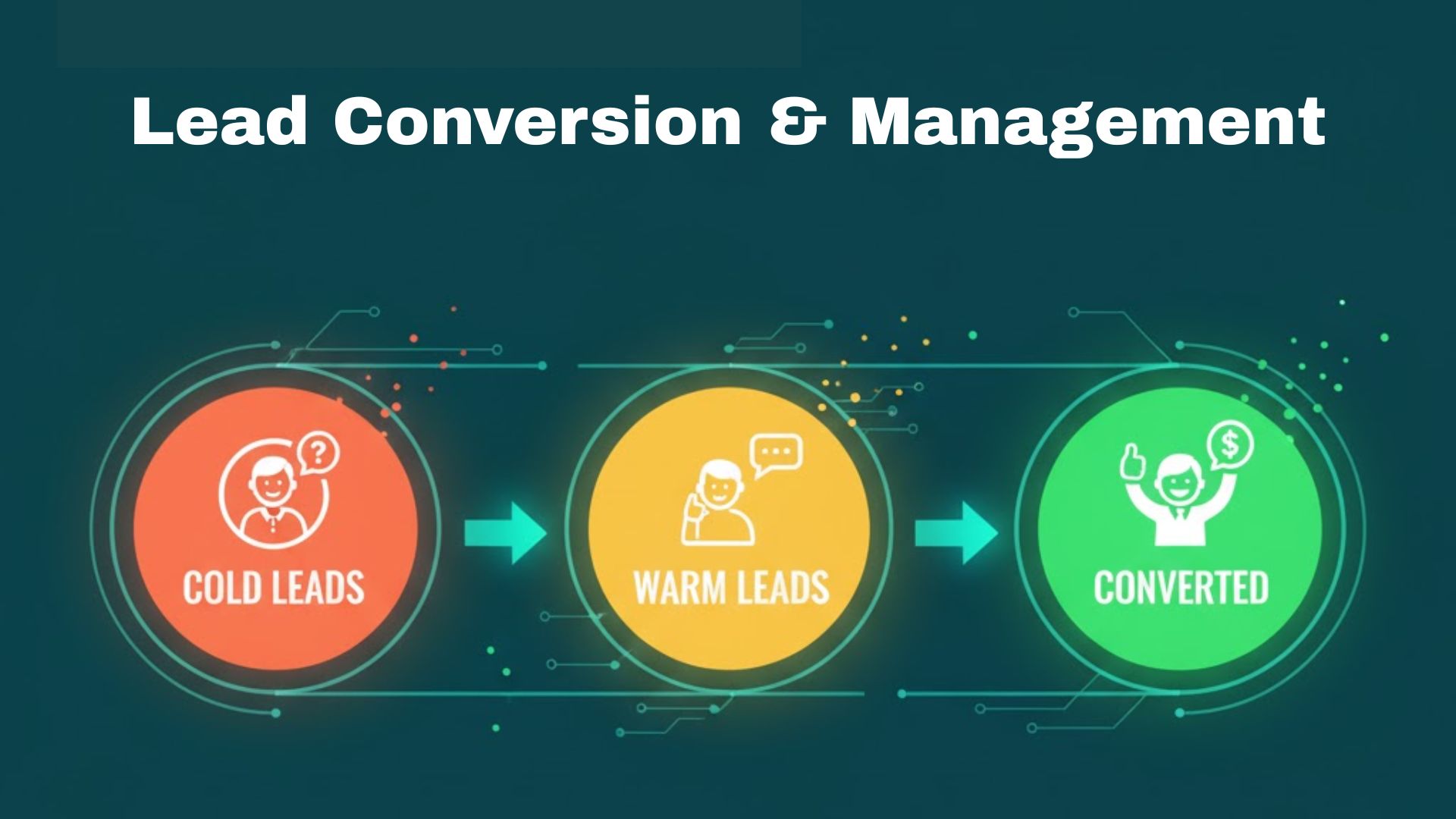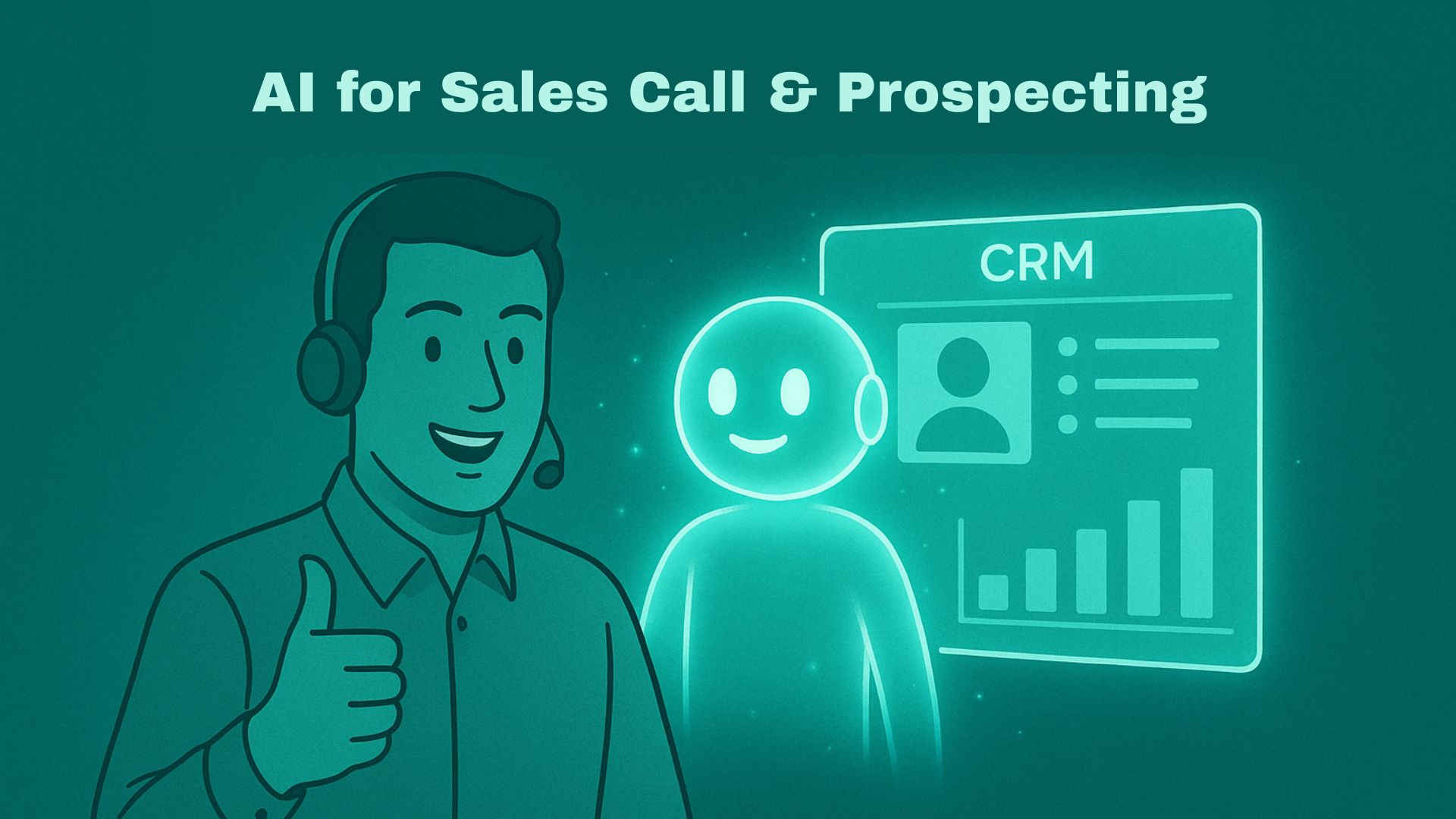

To know where you stand in the industry and whether your marketing and sales efforts are yielding results, it’s important to track conversion rate.
In this guide you will learn how to improve lead conversion, what are the metrics to measure, proven lead management techniques and how AI helps in this journey.
What is lead conversion?
In B2B, this usually means moving from a Marketing Qualified Lead (MQL) to a Sales Qualified Lead (SQL), and finally to a signed deal.
Key metrics to track:
- Lead conversion rate = (No. of leads converted / Total leads) x 100
- Average time to convert = Time from first contact to deal close

Why does lead conversion matter?
Attracting leads into your pipeline is good but to generate revenue, carefully nurturing them to come to a close is more important.
How to improve lead conversion?
Personalize follow-ups based on behavior and interests.
Every outreach should be personalized based on behavior and interests of the client company, for which you can use tools like Drift to capture real-time website behaviour.
One way to achieve this is to reference their recent social media activity or achievements (quote exact numbers from reports). Since leads lose interest quickly, respond within the first 5 minutes if possible. You can also set an automation or reminder for the same.
For instance, if a lead downloads an eBook, send a follow-up email referencing that specific content:
“Hi [Name], I saw you downloaded our [eBook Name]! Let me know if you’d like to explore how we’ve helped companies like yours with [specific solution].”
Qualify leads better (ICP, budget, decision authority).
Not all leads will convert so decide on who you want to invest energy into by deciding on your Ideal Customer Profile and budget.
To focus on real buyers, use frameworks like:
BANT (Budget, Authority, Need, Timeline) that assesses a prospect's readiness to buy based on mentioned factors
OR
CHAMP (Challenges, Authority, Money, and Prioritization) that first focuses on uncovering the prospect's pain points and urgency before evaluating their authority, budget, and overall priority for the solution.
Automate lead scoring with AI tools like MadKudu to save time.
Leverage social proof (case studies, reviews)
Send relevant case studies, blog posts, testimonials, customer reviews or even demo videos that solve their problem. This builds trust and establishes credibility.
Technology and tools
Combine a CRM (e.g., Superleap) with email automation tools (e.g., Mailchimp) to ensure timely follow-ups.
Clear communication
Product features, pricing, and the value it will deliver should be spoken and communicated transparently.
Key metrics to measure lead conversion
What is lead management?
In practice, this means having a clear workflow:
Capturing leads: Collecting information through online forms, events, or inbound inquiries.
Qualifying leads: Using criteria like industry, budget, and decision-making authority to identify high-potential prospects.
Distributing leads: Assigning qualified leads to the right sales reps.
Nurturing leads: Engaging with leads through personalized outreach, educational content, and follow-ups.
Closing deals: Converting nurtured leads into paying customers.

Throughout this process, a CRM (like Superleap) is often used for tracking every touchpoint.
Lead management techniques that work
- Lead Scoring: Assign your leads a score based on their behaviour (are they signing up for webinars or opening emails?) and fit (what is their job title, and how big the company?). Helps identify high-value leads and focus on them.
- Segmentation: To customize your pitch for each lead, as a sales rep it is important that you segment them based on industry, deal size, location, or pain point. Helps enable personalized communication.
- Lead nurturing campaigns: Automate emails and run a content drip. Use automation tools like MailChimp to set up for drip emails, reminders or even retargeting ads over time. Helps keep prospects engaged and move them towards a purchase.
- CRM use: If you’re a sales rep, usage of a CRM is a must to store, update and keep lead data clean and accessible. Serves as a single source of truth and maintains data transparency across departments.
- Follow-up sequences: Use sequences across email, phone, and LinkedIn to follow up with prospects. Set reminders. Don’t rely on memory. Ensures persistent, multi-channel engagement and prevents potential leads from falling through the cracks.
The role of AI in lead management
AI-powered lead scoring
AI ranks leads based on behaviour, engagement history, firmographics, market conditions and buyer intent, which increases accuracy by 90% compared to just 30% efficiency, if you’re doing it the traditional way, according to agile growthlabs.
Predictive analytics to identify high-intent leads
Tools like Marketo help identify leads showing high purchase intent using past data, current trends and competitor activity.
Chatbots for instant qualification
Chatbots engage website visitors in real-time, qualifying leads based on their responses.
For example, a chatbot on a SaaS website can ask, “What’s your team size?” to determine if the lead fits their ICP.
Lead management in different contexts
B2B vs B2C
B2B usually involves a longer sales cycle with multiple stakeholders where the deal value is high. In such cases, AI-powered scoring and conversational tools help automate complexity.
B2C sales cycles are shorter, and run on volume and speed; chatbots and behavior-triggered nurturing are effective tools in this scenario.
SMB vs Enterprise
SMBs benefit from automated AI workflows to handle limited staffing resources.
Enterprises thrive with AI-driven dashboards, predictive scoring, and rich data segmentation for better forecasting and coordination.
Product-led vs Sales-led strategies
Product-led businesses can leverage AI triggers from in-product behavior (e.g., trial signups) to initiate timely outreach.
Sales-led organizations use AI to segment and score prospects before hands-on outreach by reps.
Zurich Insurance built an AI CRM that recommends products to agents based on customer data - reducing service time by over 70% and enabling agents to act like trusted advisors, not just routine order takers
What are the benefits of lead management for sales teams?
Prevents lead leakage (no one falls through the cracks)
Without a defined lead process, it is possible that leads slip through the crack, especially when they come from multiple channels. With a system in place, every inquiry is logged and followed up, ensuring you make the most of each chance.
Increases productivity with prioritized lists
Not all leads are at the same phase. Some may be ready to buy, some are still exploring. With a lead management tool, you can score and sort leads based on the criteria mentioned before. This helps sales teams focus on high-potential leads first, instead of wasting time chasing cold ones.
Improves handoff between marketing and sales
Marketing attracts leads, and hands them over to sales for a close. A lead management system bridges this gap and makes the handoff smoother. When a lead takes an action (e.g. downloads a whitepaper, attends a webinar), it’s automatically passed to sales with all relevant background.
Boosts overall lead-to-revenue conversion
With better tracking, prioritization, and follow-up, lead management systems help convert more leads into paying customers. Teams can nurture leads properly, track their journey, and time their outreach to perfection.
Enhances forecasting and pipeline visibility
Sales leaders need visibility to plan and forecast accurately. Lead management tools give real-time insights into how many leads are in the pipeline, how they’re progressing, and where the bottlenecks are. This helps in setting realistic sales goals and identifying areas to improve.
Tools that support lead conversion & management
Harley‑Davidson NYC - AI Marketing with Albert
Challenge
Harley‑Davidson’s New York City dealership was stuck selling only one or two motorcycles per week during the slow winter season. Traditional marketing methods failed to identify high-potential buyers, resulting in poor leads and low sales volume.
Solution
The dealership partnered with Albert, an AI-driven marketing platform by Adgorithms. Albert analyzed customer and dealership CRM data to identify "lookalike" prospects - people resembling past high-value buyers. It created targeted micro-segments and autonomously optimized ad campaigns across Facebook and Google in real-time, reallocating budgets and refining messages for maximum impact.
Results
- Qualified leads surged by 2,930% in just three months - from 1 to 40 per day.
- 50% of new leads were lookalikes by month three (up from 15% initially).
- One AI-optimized weekend campaign resulted in 15 motorcycle sales - nearly doubling their summer record of 8.
- The dealership’s business tripled year-over-year, prompting the creation of a new call center with six additional staff to manage demand.
Conclusion
Only if you nurture your leads are they valuable. Mastering lead conversion and lead management helps you close more deals, faster - without burning out your team.
Heading text
Nunc sed faucibus bibendum feugiat sed interdum. Ipsum egestas condimentum mi massa. In tincidunt pharetra consectetur sed duis facilisis metus. Etiam egestas in nec sed et. Quis lobortis at sit dictum eget nibh tortor commodo cursus.
Odio felis sagittis, morbi feugiat tortor vitae feugiat fusce aliquet. Nam elementum urna nisi aliquet erat dolor enim. Ornare id morbi eget ipsum. Aliquam senectus neque ut id eget consectetur dictum. Donec posuere pharetra odio consequat scelerisque et, nunc tortor.
Nulla adipiscing erat a erat. Condimentum lorem posuere gravida enim posuere cursus diam.
.svg)





